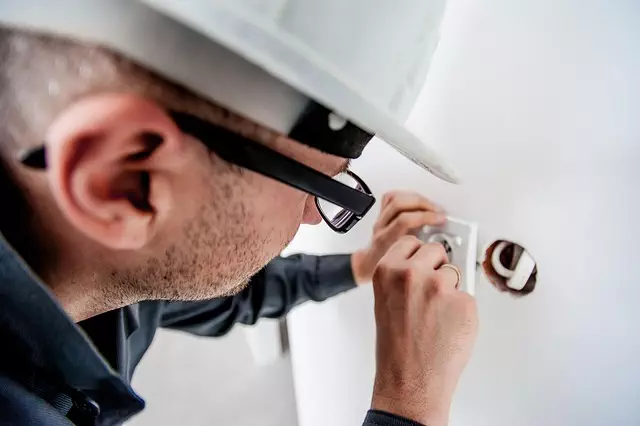Pier and beam foundations offer stability and drainage benefits but require regular inspection for potential issues like settling, termite damage, or structural flaws. Proactive foundation care involves checking for uneven floors/walls, cracks over 1/4 inch wide, wood rot, and loose piers. Inspections should include both exterior assessments and up-close examination of pier and beam components. Advanced tools like drones and GPR aid in detailed data gathering. Early detection through routine checks prevents severe damage and costly repairs. Repair costs vary based on damage extent and range from $10-$100+ per square foot, emphasizing the importance of professional assessment and maintenance for residential foundation repair.
“A robust pier and beam foundation is crucial for any residential property, offering stability and longevity. This article delves into the intricacies of these foundations, providing a comprehensive guide for homeowners and professionals alike. We explore the basics, emphasizing regular inspections as a vital maintenance practice. Learn to identify common issues such as settlement cracks, wood rot, and insect damage. The step-by-step inspection process ensures thorough assessments. Discover how technology enhances modern foundation evaluations, and understand when to initiate repair with our red flag indicators. Additionally, we offer cost insights and preventive tips for long-term residential foundation repair.”
Understanding Pier and Beam Foundations: A Basic Overview

Pier and beam foundations, a common type of support system in residential construction, offer both structural integrity and versatility. This foundation design consists of vertical supports, known as piers, connected to horizontal beams that distribute the weight of the structure evenly. This layout allows for better drainage compared to traditional concrete slabs, as it elevates the home’s base off the ground, preventing water accumulation around the perimeter.
Regular inspection is crucial in identifying potential issues with pier and beam foundations. Over time, factors like settling soil, termite damage, or poor initial construction can compromise their stability. Early detection of problems through comprehensive residential foundation repair assessments enables prompt addressing, ensuring the longevity and safety of homes built on these foundations.
Importance of Regular Inspection for Residential Properties

Regular foundation inspections are a crucial aspect of home maintenance, especially for residential properties. Over time, even the sturdiest structures can show signs of wear and tear, and early detection is key to preventing more significant and costly repairs in the future. A professional inspection can identify potential issues such as settling, cracks, or bowing walls, which are common symptoms of foundation problems. These problems often arise due to various factors like soil conditions, water damage, or structural flaws, and they don’t always present visible indicators during everyday inspections.
For homeowners, staying proactive about foundation health is a smart investment in residential foundation repair. Regular checks allow for timely intervention, minimizing the risk of widespread structural damage. It’s beneficial to consider it as part of an overall home maintenance routine, ensuring peace of mind and preserving the property’s value over the long term.
Common Issues and Defects to Look Out For

When conducting a pier and beam foundation inspection, there are several common issues and defects to keep an eye out for, as these can indicate potential problems that may require residential foundation repair. One of the most visible signs is uneven floors or walls, which could be caused by settling or structural damage. Cracks in the foundation, especially those wider than a quarter inch, are another red flag; these cracks can signal instability and should be addressed promptly to prevent further deterioration.
Wood rot is also a common problem, particularly in areas with high humidity levels. Check for any signs of decay or softening in the wooden elements supporting the foundation. Additionally, look out for loose or missing piers, which could compromise the structural integrity of the entire system. These issues may require professional intervention to ensure the safety and longevity of your home, highlighting the importance of regular maintenance and prompt action when potential problems are identified.
Inspection Process: Step-by-Step Guide

The process of inspecting a pier and beam foundation involves a meticulous step-by-step approach to ensure structural integrity, especially in older homes. It’s crucial for homeowners considering residential foundation repair to understand this process. Begin by examining the exterior of the structure, looking for any visible signs of damage, settling, or uneven surfaces. This initial assessment provides a preliminary understanding of potential issues.
Next, inspect the pier and beam system up close. Check each pier for rot, corrosion, or damage. Verify that they are properly aligned and spaced according to engineering specifications. Examine the beams for any cracks, deformities, or signs of structural failure. Ensure proper support at joints and connections, as these are critical areas prone to weakness. Document all findings for further analysis, which will guide decisions on whether professional residential foundation repair is necessary.
Technology's Role in Modern Foundation Inspections

In the realm of residential foundation repair, technology has emerged as a powerful ally, revolutionizing inspection processes. Modern foundation inspections leverage advanced tools and techniques to uncover potential issues with precision and efficiency. One notable game-changer is the use of drones for aerial surveillance, which provides a bird’s-eye view of the foundation, especially useful in navigating hard-to-reach areas or large properties. This technology offers a safe, cost-effective, and non-invasive way to gather detailed data without causing any damage.
Additionally, ground-penetrating radar (GPR) has become an invaluable asset for inspectors. GPR can detect anomalies beneath the surface, such as cracks, voids, or changes in soil composition, enabling professionals to identify structural weaknesses accurately. By combining these technological advancements with traditional inspection methods, experts can conduct thorough evaluations, predict potential problems, and recommend appropriate solutions for residential foundation repair, ensuring the longevity and stability of homes.
When to Consider Foundation Repair: Red Flags

If you’re a homeowner, noticing red flags in your home’s foundation can signal a need for residential foundation repair much sooner than you might think. While some issues can be addressed with minor fixes, others indicate more severe problems that require immediate attention from a professional. Look out for cracks in the foundation walls or floor, especially those wider than 1/8th of an inch (about the width of a credit card). Uneven or tilted floors, doors that stick or swing open easily, and visible gaps around windows or doors are also warning signs. Water damage, mold growth, or a sinking section of your home’s structure are additional indicators that foundation repair is necessary. Regular inspection is key to identifying these issues early on, preventing further damage, and saving you from costly repairs down the line.
Cost Estimation and Repair Options

Estimating the cost of pier and beam foundation repair can vary greatly depending on several factors, including the extent of damage, accessibility, and local labor rates. For minor repairs like replacing a few beams or piers, costs can range from $10 to $25 per square foot. However, for more extensive issues that involve structural reinforcement or entire replacement, prices can surge to $50 or even $100 per square foot.
There are several repair options available when addressing pier and beam foundation problems. Simple fixes may include replacing damaged wood with treated lumber or steel beams. For severe cases, full foundation stabilization or even a complete rebuild might be necessary. Residential Foundation Repair specialists often recommend structural engineering assessments to determine the best course of action, ensuring both the safety and longevity of the structure.
Maintenance Tips to Prevent Future Damage

Regular maintenance is key to preventing future damage to your pier and beam foundation. One of the most important steps is ensuring proper drainage around the structure. Check for any clogs or obstructions that could cause water to pool against the foundation, as this can lead to erosion and structural damage over time. Regularly inspect and clean out drainages channels and downspouts to ensure optimal water flow.
Another critical aspect is monitoring for signs of moisture intrusion. Look for any visible cracks, warping, or sagging in the wooden components of your pier and beam foundation. Addressing these issues promptly with a professional residential foundation repair service can prevent further deterioration and costly repairs down the line. Regular inspections and maintenance are essential to keeping your foundation strong and secure.
